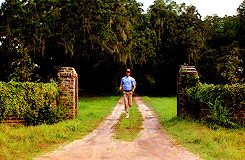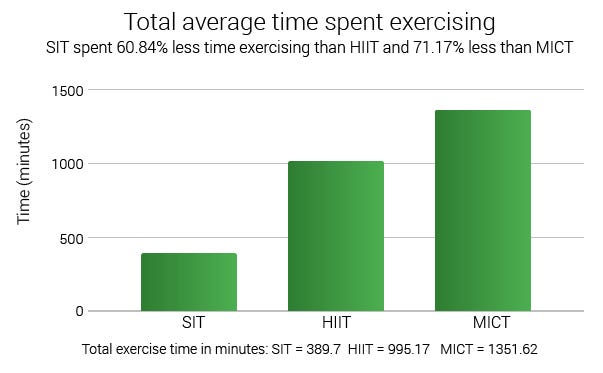The Mix Tape, Vol. 75
Welcome to this week’s Mix!
The discipline to not run
Destroying the “fat but fit” myth
How to steal Twitter followers
Vivid descriptions bring writing to life
The discipline to not run
I began moderate distance running in high school, to build the cardiovascular endurance I needed to sit on the bench during football games.
That was 30 years ago. I never really stopped.
My running baseline has been mostly this:
4-6 miles
8-9 minutes per mile pace
3-5 times per week
But now, I’m changing it up.
Fitness should be efficient. The less time we can spend doing it while maximizing results, the better.
So when I heard Alex Feinberg say “Have the discipline to not run” in this discussion, it wounded me.
Was there something more efficient I could do? With, possibly, less joint stress?
A study in Run Repeat says yes.
For reference:
SIT: Sprint-interval training (short burst of all-out effort followed by rest)
HIIT: High-intensity interval training (varying intervals of effort, like Crossfit)
MICT: Moderate-intensity continuous training (jogging, steady biking)
Now look at these two graphs.
In this study, SIT workouts delivered far better results in far less time.
So for the first time in 30 years, I’m dumping the distance running.
I’m going to try SIT exclusively for a month and see what happens.
I’m trying this with running sprints and on a stationary bike. I hope the bike is effective, as it’s far better on my 47-year-old joints.
This is the pattern:
30 second all-out sprint (run or biking)
90 second slow walking (or pedaling) recovery
Repeat six times.
That’s it.
We’ll see what happens. When the month is up, I’ll share my starting and ending weights, and, if I’m feeling bold, before-and-after pics.
Don’t be afraid to experiment with your fitness routines. Just take precautions--warm up--and don’t overdo it.
You might find a better way forward, even after thirty years.
Destroying the “fat but fit” myth
No one should ever be mocked for their appearance.
But the idea that we can be healthy while overweight is destructive and dangerous.
So I’m surprised—and please—to see mainstream media refuting it:
However, the study showed greater cardiovascular risk for overweight and obese participants compared with those of a normal weight, regardless of how much exercise they did.
Participants who were obese and active were twice as likely to have high cholesterol, four times as likely to have diabetes and five times as likely to have high blood pressure as those who were normal weight but inactive.
"Exercise does not seem to compensate for the negative effects of excess weight," Lucia said.
Excess body fat is correlated with every negative health condition you can think of.
Every single one.
How to steal Twitter followers
This article is not as insidious as it sounds:
It's very difficult for smaller accounts to gain followers. Most of what you tweet goes on to the Twitter void and gets lost.
But what If I told you you can actually steal someone else's followers?
Alex lays out a “fast follower” strategy:
Seek out accounts in your desired niche who have audiences that interact with the content (comments and retweets).
Set up notifications so you are alerted when these accounts Tweet.
Comment quickly and add value: ask a question, or add an insight to the statement. Use humor sometimes, if you can. Be interesting.
This strategy will drive followers of the original account to check out your profile. If your profile is interesting and optimized, you can build an audience.
Vivid descriptions bring writing to life
Peter Brannen takes us all to school in his book “The Ends of the World,” describing an event so large—the meteor impact that wiped out the dinosaurs—that our brains can’t really wrap around it:



Brannen masterfully paints a picture of unfathomable devastation using relatable comparisons.
He doesn’t just share stats on how large the meteorite was—he says it was bigger than Mount Everest.
He doesn’t just share estimated speed—he uses the cruising altitude of a 747 to bring it into context.
Use vivid comparisons to bring facts and data to life. Create colorful context. This works for meteors and mathematics and every other topic.
Thank you for reading and sharing.
Please hit reply if you have questions, comments, or open rebuttals. (Or just want to say hi.)








